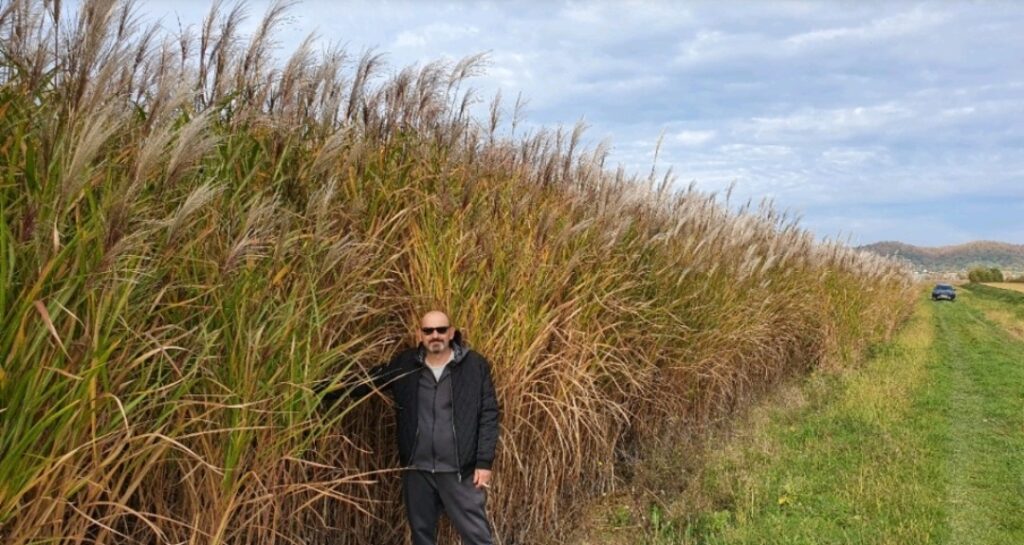Miscanthus giganteus is a high-yielding perennial grass that has gained attention in recent years as a potential biomass crop for industrial cultivation in Europe.
As a professional who spend 10 years of life growing and developing Miscanthus crop in Europe, I have to admit that there are some significant obstacles to cultivating Miscanthus giganteus in the EU, despite all its potential benefits. Let me take a moment to discuss some of these challenges.
As a professional who spend 10 years of life growing and developing Miscanthus crop in Europe, I have to admit that there are some significant obstacles to cultivating Miscanthus giganteus in the EU, despite all its potential benefits. Let me take a moment to discuss some of these challenges.
- Lack of Awareness: Despite being a promising crop, many farmers are still not aware of the benefits of Miscanthus giganteus cultivation. Perhaps it’s because the name is a bit of a mouthful, or maybe it’s because it’s not as glamorous as growing wheat or corn. Either way, it’s a shame that more people aren’t aware of the potential of this fantastic crop.
- Initial Costs: One of the major obstacles to growing Miscanthus giganteus is the initial cost of establishing the crop plantations. Unlike annual crops, Miscanthus giganteus is a perennial crop that requires several years to reach full maturity. This means that farmers need to make a significant upfront investment in land preparation, planting, and weed control, with no immediate returns.
- Planting Material Availability:The success of Miscanthus giganteus cultivation relies heavily on the quality of planting material used. While both rhizome division and tissue culture can be used to propagate this crop, it is important to select high-quality, disease-free planting material that is true to the desired genotype.It is also important to ensure that the planting material is stored and transported under proper conditions to prevent damage and maintain viability.
- Limited Market: While Miscanthus giganteus biomass can be used for a variety of applications, including bioenergy and biomaterials, the market for these products is still relatively limited. This can make it challenging for farmers to find a reliable market for their crop, especially if they are not located close to existing bioenergy facilities.
- Harvest and Transport: Harvesting and transporting Miscanthus giganteus can be a challenge. Unlike corn or wheat, efficient harvesting of Miscanthus giganteus biomass require specialized machinery and equipment for harvesting and handling. Additionally, harvested biomass is bulky and low in density, making transport more difficult and expensive.
- Climate Adaptability: While Miscanthus giganteus is a highly adaptable crop, it still has some limitations when it comes to climate. The crop requires a warm, moist environment to thrive, which may limit its potential in some parts of Europe. Additionally, frost can damage the crop in the first establishment year, limiting its potential in colder climates.
- Land Use Competition: One of the biggest challenges facing Miscanthus giganteus cultivation is competition for land. With limited available land for farming, farmers must compete with other crops and land uses, such as nature conservation and recreation.
And the cultivation of Miscanthus giganteus in Europe has many advantages. It is a low-input, high-yield crop that can provide renewable energy, improve soil health, support biodiversity, and create jobs. As the world seeks to transition to more sustainable forms of agriculture and energy production, Miscanthus giganteus presents an attractive option for farmers and policymakers alike. Here are ten advantages of growing this crop:
- High Yield: Miscanthus giganteus has the potential to yield up to 25 tonnes per hectare annually, making it a high-yielding crop compared to other energy crops.
- Low-input Crop: Miscanthus giganteus requires fewer inputs such as fertilizer and pesticides, reducing production costs and environmental impact. This also makes it a more sustainable option for farming.
- Carbon Sequestration: Miscanthus giganteus is a perennial crop that can sequester carbon in the soil, reducing greenhouse gas emissions. The crop’s deep roots also contribute to the carbon storage in the soil.
- Energy Production: Miscanthus giganteus can be used as a feedstock for bioenergy production, providing a renewable and sustainable energy source. This crop is particularly suitable for combustion or conversion to biofuels, as it has a high calorific value and low ash content.
- Job Creation: The cultivation of Miscanthus giganteus can create new jobs in rural areas. This is particularly important in regions where traditional agriculture is facing challenges.
- Soil Health: Miscanthus giganteus has deep roots that can improve soil structure, reduce erosion, and increase water retention. It also improves the soil organic matter and nutrient status.
- Biodiversity: Miscanthus giganteus cultivation can provide habitat for wildlife, increasing biodiversity in agricultural landscapes. It can also support pollinators and beneficial insects.
- Land Use Efficiency: Miscanthus giganteus can be grown on marginal land unsuitable for food crops, increasing land use efficiency. This reduces the competition for land with food crops.
- Economic Benefits: Miscanthus giganteus cultivation can provide economic benefits to farmers and local communities. It can help to diversify the farm income and bring in extra revenue for the farm.
- Renewable Resource: Miscanthus giganteus is a renewable resource that can help to reduce dependence on fossil fuels. It can help to reduce greenhouse gas emissions from energy generation and transportation.
Despite these obstacles, there is no doubt that Miscanthus giganteus has great potential as a sustainable crop in Europe. With the right policies and support, farmers can overcome these challenges and help to build a more sustainable agricultural system for the future. So, let’s raise a glass to Miscanthus giganteus, I believe that Miscanthus giganteus will overcome these obstacles to become a staple crop and truly sustainable biomass feedstock basement for the European bioeconomy.



